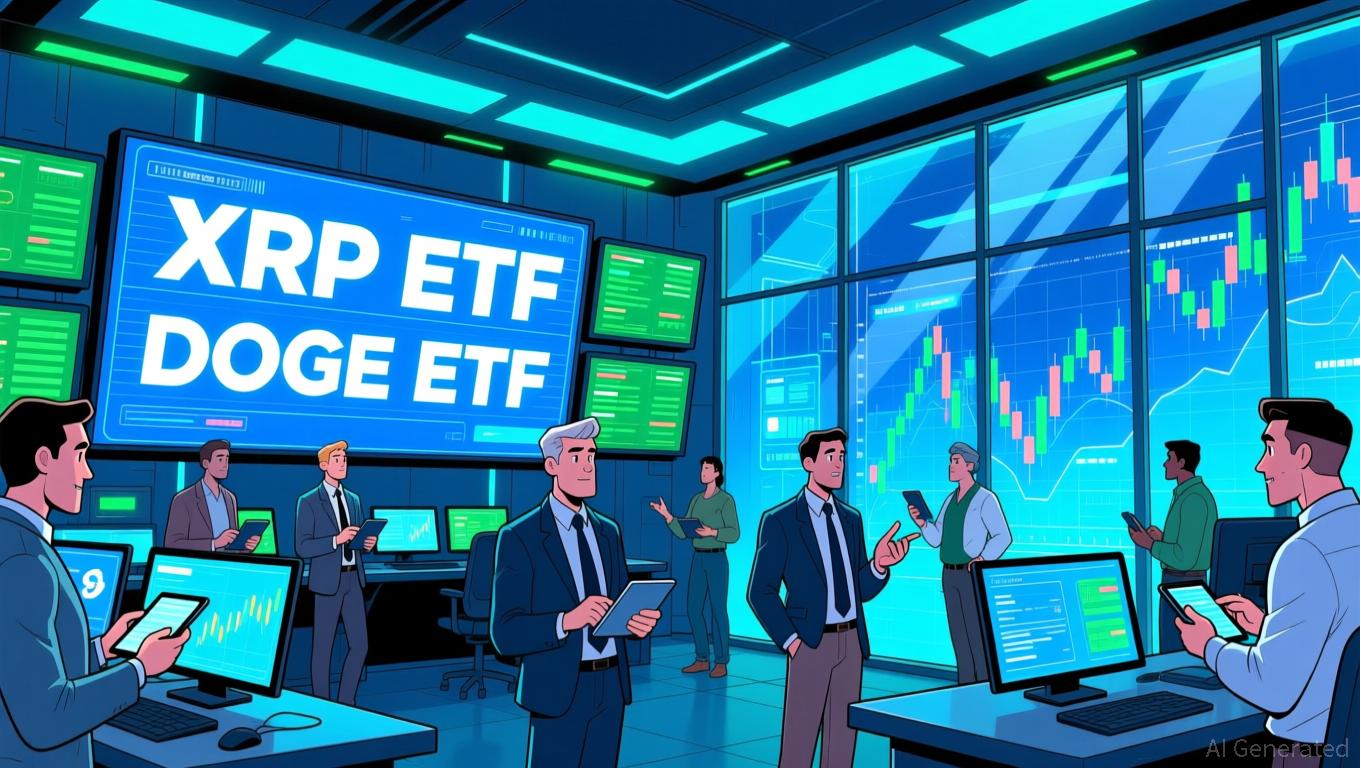Solana News Today: Solana’s Bold Bet on Scarcity: Will Reducing Supply Ignite a Price Rally?
- Solana accelerates disinflation to create scarcity, reducing future supply by 22M SOL. - This aims to stabilize value by limiting new tokens, aligning with deflationary market trends. - ETF inflows boost institutional interest, but retail participation remains low. - Market reactions are mixed, with optimism about price growth and caution on execution risks.
Solana’s Bold Economic Revamp: Pursuing Token Scarcity
Solana (SOL) is in the midst of a significant economic transformation, as developers introduce a proposal to dramatically speed up disinflation in order to foster long-term scarcity for the token. This initiative, which seeks to cut the timeline to reach a 1.5% terminal inflation rate in half, could eliminate around 22 million
According to several in-depth reports, the proposal would double the current rate of disinflation, reducing the time to terminal inflation from 6.2 years to just 3.1 years. By slashing the annual inflation rate by 50%, the network will issue new SOL at a much slower pace, restricting the influx of tokens into the market. This change responds to the broader investor appetite for assets with deflationary traits—a trend that has historically fueled price gains in the crypto sector. “Cutting 22 million SOL from future issuance is a substantial reduction in potential liquidity, which may help stabilize the token’s price over time,”
Traders are watching these developments closely. At present, Solana is trading near $125.8, maintaining its ground despite the overall turbulence in the crypto market. Technical experts point to a crucial support level at $95.26; a sustained move above this mark could open the door for a challenge of the previous all-time high around $295. Nonetheless, some bearish signals remain, such as a drop in futures open interest (OI) to $7.2 billion from a September peak of $17 billion,

This drive for scarcity is part of a larger plan to boost Solana’s attractiveness beyond its technical strengths. While the network already leads in transaction speed and ecosystem activity, the economic shift is designed to reinforce its status as a store of value. “It’s no longer just about fast transactions—it’s about building a scarcity story that benefits long-term investors,” one analyst explained. The proposal has sparked lively debate among market participants, with some seeing it as a trigger for continued price appreciation, while others warn of possible implementation challenges.
Meanwhile, Solana’s ecosystem is steadily growing.
The outcome of the economic proposal will depend on community support and market forces. Should it pass, the reduced token supply could create a supply-demand imbalance, especially as network activity and application development accelerate. “A smaller influx of new tokens, combined with rising demand, could put upward pressure on prices,”
For now, Solana’s supporters remain upbeat. The network’s unique combination of technical prowess and economic innovation has made it a standout in the crypto world. As the proposal moves forward, the market will be watching to see if this bold approach to scarcity is embraced—or if it becomes another lesson in the unpredictable world of digital assets.
Disclaimer: The content of this article solely reflects the author's opinion and does not represent the platform in any capacity. This article is not intended to serve as a reference for making investment decisions.
You may also like
Bitcoin Updates Today: Gemini Introduces Bitcoin Card: Incentivizing Users to Connect Cryptocurrency with Everyday Purchases
- Gemini launches Bitcoin credit card with referral rewards and cashback to bridge crypto and traditional finance. - Market analysis shows mid-cycle holders driving Bitcoin's 12% selloff below $90,000 amid oversold futures conditions. - Crypto cards differ from traditional offerings by enabling direct Bitcoin spending without fiat conversion, addressing user accessibility challenges. - Experts like Saylor and Winklevoss highlight Bitcoin's reduced volatility and potential for recovery, positioning crypto a

Ethereum Updates: Yi Lihua's Careful Buying Strategy Stands Out Amid Ethereum's Sharp Downturn
- Yi Lihua, Liquid Capital founder, accumulates Ethereum in $3,000–$3,300 range via spot buys, avoiding leverage amid volatile market conditions. - Ethereum faces $689M outflows, rising leverage ratios (0.5617), and $47.59B exchange reserves, signaling heightened bearish caution. - Macroeconomic factors like Fed hawkishness and 4.08% 10-year yields drive capital outflows, pushing Ethereum down 6.5% to $3,080 weekly. - Yi's low-risk accumulation contrasts with $29.23M long liquidations, positioning him to c

XRP News Today: SEC Approves Altcoin ETFs, Boosting Institutional Investment in Cryptocurrency
- SEC approves multiple XRP/DOGE ETFs from 21Shares, Franklin Templeton, and Grayscale, signaling growing institutional acceptance of altcoins. - 21Shares' TOXR ETF gains automatic approval via CME CF XRP-Dollar tracking, with Coinbase and BNY Mellon handling custody/admin functions. - Franklin Templeton's XRP Trust removes restrictive clauses to accelerate listing, offering regulated exposure without custody risks from ledger forks. - Grayscale expands crypto offerings with XRP/DOGE ETFs on NYSE, joining

Germany's Solar Turning Point: Spotlight on Legislation, Infrastructure, and Ideological Differences
- Germany's SolarPlus Forum 2025 emphasized legislative clarity, funding innovation, and cross-sector collaboration to accelerate solar adoption amid evolving energy policies. - Outdated regulations and permitting hurdles were highlighted as barriers, with calls to align Bundestag reforms with market demands like gas surcharge removal by 2026. - Cement industry growth (5.7% CAGR) and green innovations support infrastructure needs, though energy cost volatility and compliance challenges persist. - Internati
